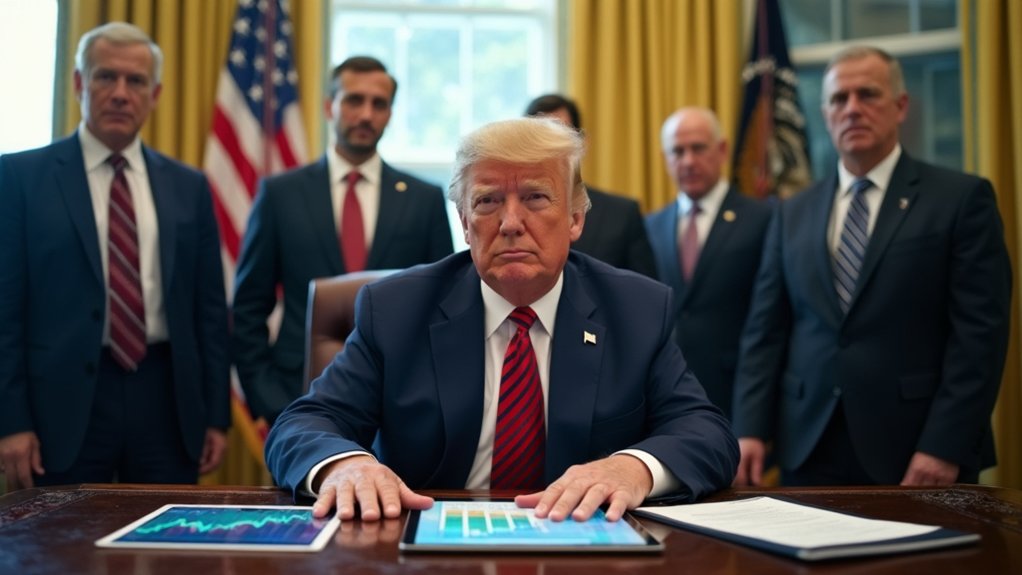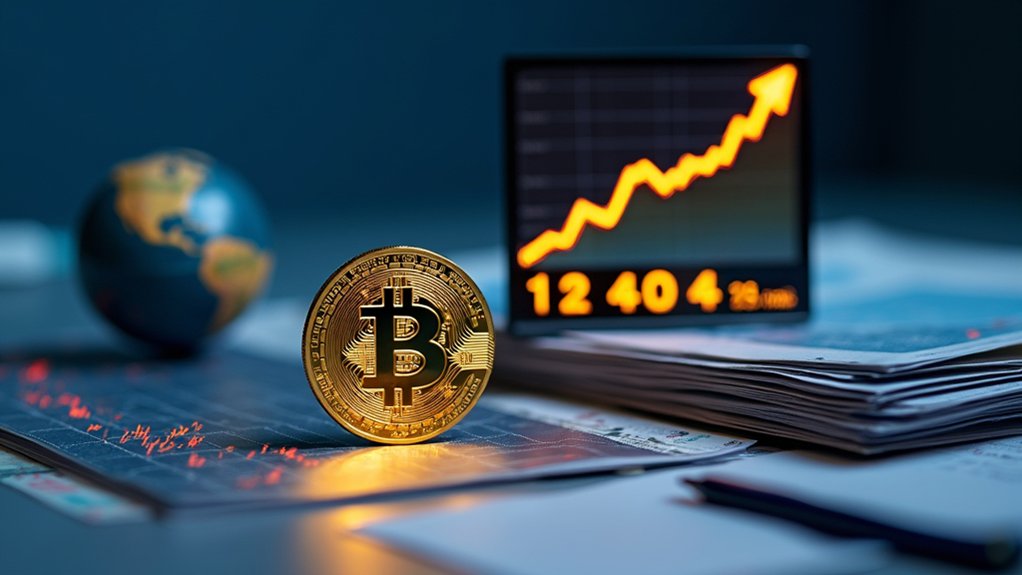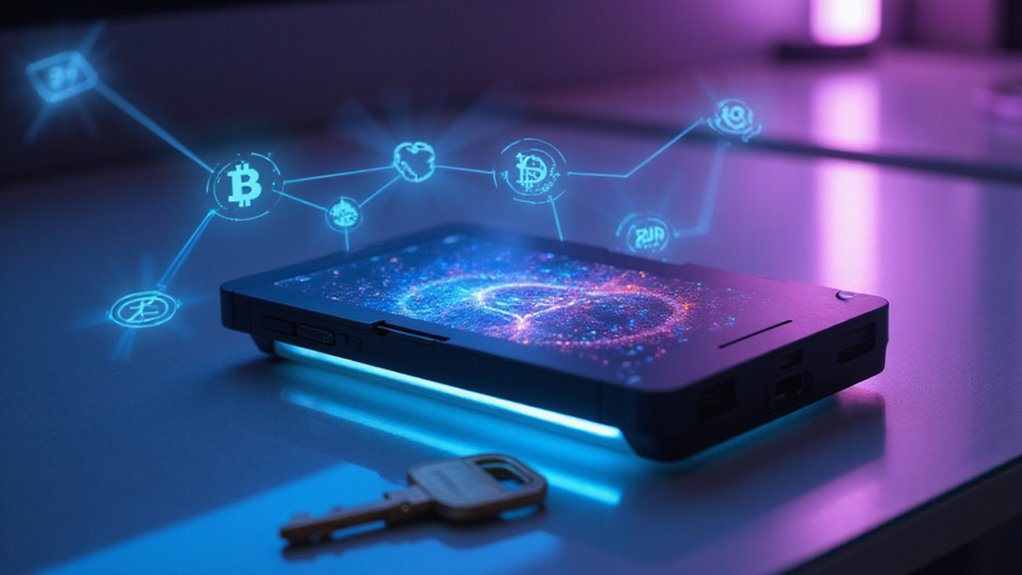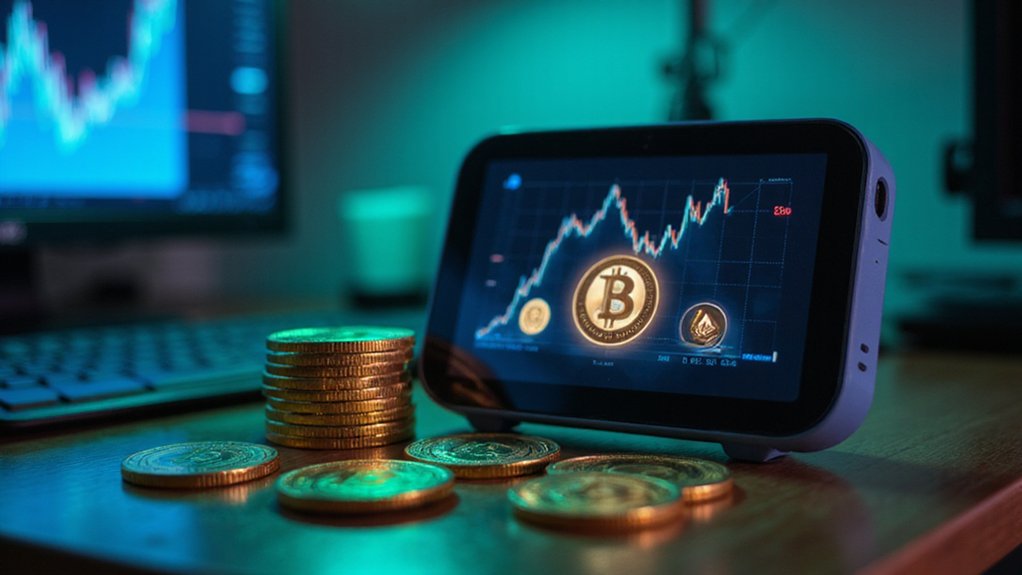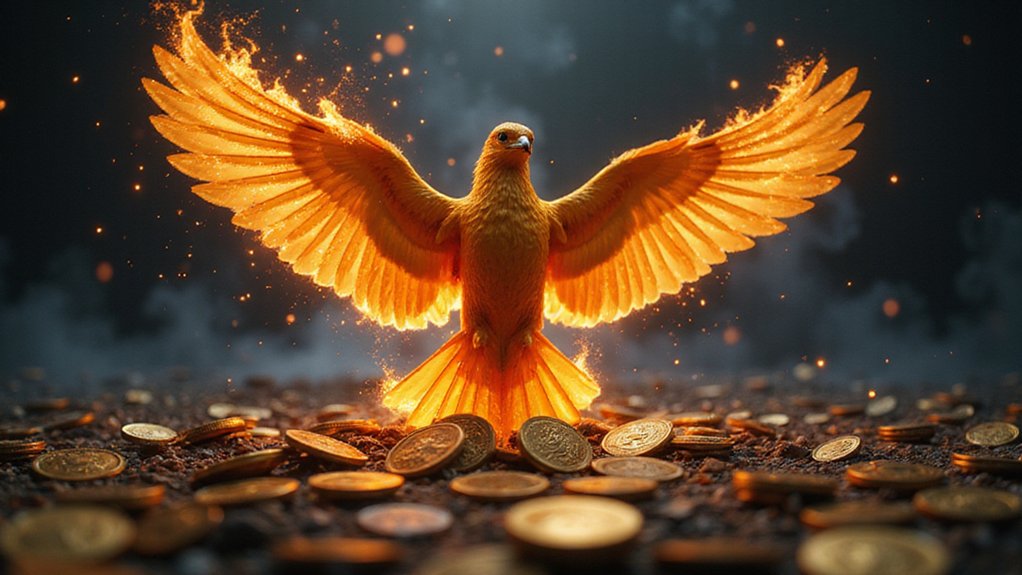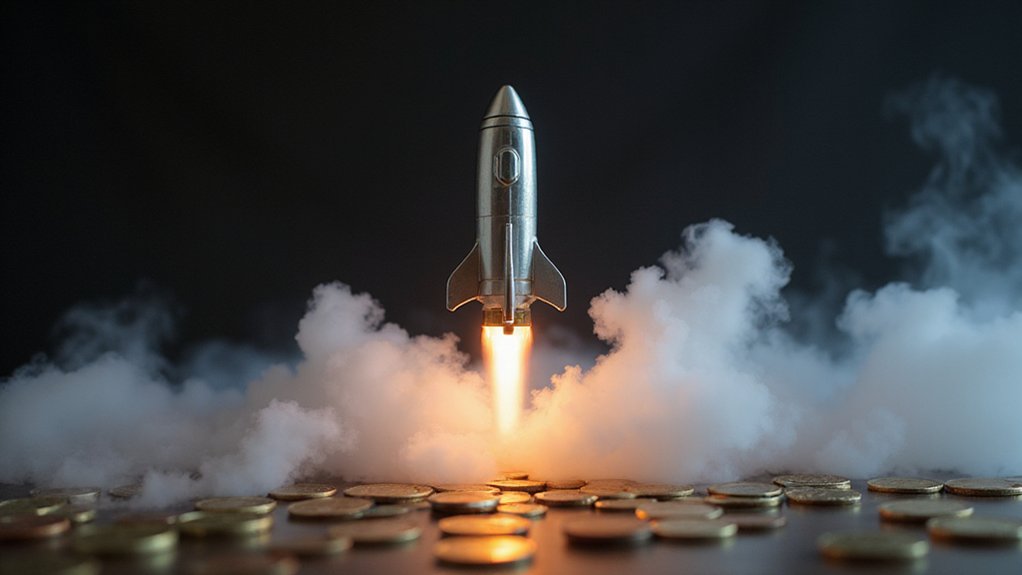NFTs (non-fungible tokens) represent unique digital certificates of ownership recorded on blockchain technology, creating artificial scarcity in an infinitely reproducible digital world. These cryptographic assets authenticate ownership of digital items—from artwork to virtual real estate—though purchasers typically acquire the token itself rather than underlying copyright. Despite experiencing meteoric growth followed by spectacular contraction, NFTs‘ fundamental innovation lies in verifiable digital uniqueness. The technology’s potential applications extend far beyond their initial incarnation as speculative digital collectibles.
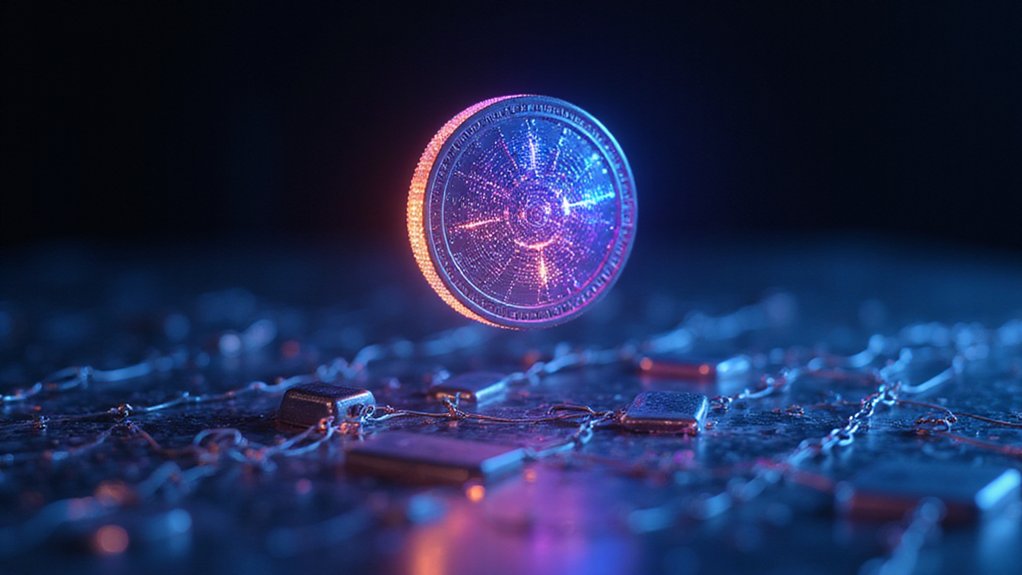
What exactly has driven millions to pour billions into digital tokens that reference cartoon apes and pixelated artwork?
Non-fungible tokens (NFTs) represent a technological innovation that has simultaneously captivated collectors and confounded skeptics.
NFTs embody the paradox of digital scarcity—mesmerizing enthusiasts while leaving rational observers utterly perplexed.
These unique cryptographic tokens exist on blockchains—predominantly Ethereum—and function as digital certificates of ownership that cannot be replicated or substituted, unlike their fungible cryptocurrency cousins such as Bitcoin.
The distinctive property of NFTs lies in their non-fungibility; each token possesses a unique digital identifier that verifies authenticity and ownership, rendering them indivisible and impossible to exchange on a one-to-one basis.
This technological architecture enables the tokenization of virtually anything—from digital art and music to virtual real estate—with ownership records immutably inscribed on a decentralized public ledger.
The barrier to entry for NFT creation remains remarkably low, allowing artists and entrepreneurs alike to “mint” tokens with minimal technical expertise.
This democratization of digital asset creation helped catalyze the market’s explosive growth from a modest $82 million in 2020 to an astonishing $17 billion in 2021—a trajectory that appears, in retrospect, unsustainable given the subsequent 90% market contraction in 2022.
Perhaps most curious about the NFT phenomenon is the disconnect between ownership rights and intellectual property law.
Purchasing an NFT confers blockchain-verified ownership of the token itself but typically grants no copyright control over the underlying digital asset—a nuance overlooked by many enthusiasts during the market’s frenzied peak.
The financial reality of NFTs has proven sobering; reports indicate that over 95% of collections now hold effectively zero monetary value.
This statistic illuminates the speculative nature of a market that critics have variously characterized as a bubble, a Ponzi scheme, or simply the digital equivalent of 17th-century tulip mania.
Nevertheless, the technology’s capacity to verify digital uniqueness represents a genuine innovation whose applications may ultimately transcend its initial implementation as collectible digital trinkets. Popular platforms like OpenSea or Rarible allow creators to customize their NFTs with names, descriptions, and even set royalties for future sales of their work. The creation of NFTs involves a process called minting, which encrypts asset information and records it permanently on the blockchain. A notable exception to typical copyright limitations is the Bored Apes project, which explicitly assigns intellectual property rights to the purchasers of their tokens.
Frequently Asked Questions
Can NFTS Be Converted Back Into Cryptocurrency?
NFTs cannot be directly “converted” to cryptocurrency—a semantic distinction that matters.
Rather, NFTs must be sold on marketplaces where a buyer exchanges cryptocurrency for the digital asset.
Post-sale, the seller receives cryptocurrency (typically Ethereum) in their wallet, which can then be traded or converted to fiat currency through exchanges.
This multi-step process, subject to market liquidity and often hefty gas fees, represents more of a liquidation than a conversion in the traditional sense.
Are NFTS Environmentally Harmful?
NFTs do carry significant environmental costs, primarily through their energy consumption.
Ethereum-based NFTs (still the industry standard, despite alternatives) demand substantial electricity—comparable to entire nations like Qatar.
While 30-70% of crypto mining utilizes renewable energy, the carbon footprint remains considerable, with each NFT potentially requiring offsets equivalent to five trees.
The projected emissions trajectory (0.37 million metric tons of CO2 by 2030) has prompted shifts toward more sustainable consensus mechanisms like Proof of Stake.
What Happens if the Platform Hosting My NFT Shuts Down?
When a platform hosting an NFT shuts down, owners face a bifurcated reality: while blockchain-based ownership remains intact (the proverbial deed still exists), accessibility and utility often plummet.
Smart contracts persist, allowing token transfers to private wallets, but the associated metadata—perhaps the raison d’être of the purchase—may vanish if stored on centralized servers.
Prudent collectors should transfer assets to alternative marketplaces or self-custody solutions before shutdown, lest their digital treasures become expensively inaccessible ghosts.
How Do NFT Royalties Work for Creators?
NFT royalties operate via smart contracts that automatically allocate a percentage of secondary sales to the original creator.
When minting an NFT, artists specify a royalty rate (typically 5-10%) that’s embedded in the token’s code.
Each time the NFT changes hands on compliant marketplaces, the creator receives their predetermined cut.
While elegant in theory, this ecosystem remains frustratingly fragmented—not all platforms enforce royalties, creating a patchwork of compensation rather than the promised passive income utopia.
Can Physical Items Be Tokenized as NFTS?
Physical items can indeed be tokenized as NFTs through a process that creates digital certificates of ownership on the blockchain.
Brands like Adidas and GAP have already embraced this convergence, linking tangible products to digital tokens using NFC technology and “digital twins.”
This tokenization enables verifiable authenticity and ownership while potentially transforming traditional markets—from art and collectibles to real estate and event tickets.
Though the infrastructure demands remain more complex than for purely digital assets.

